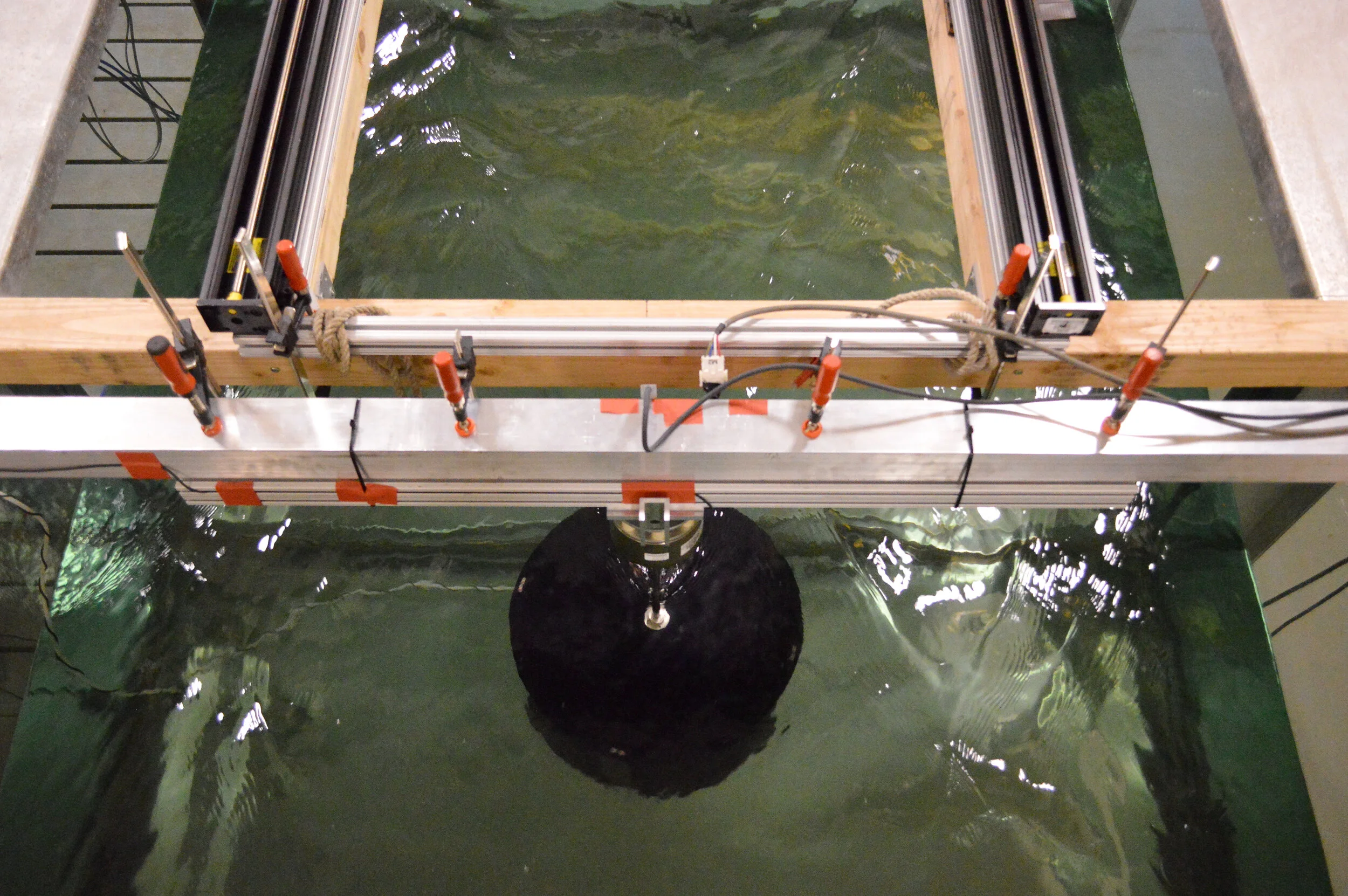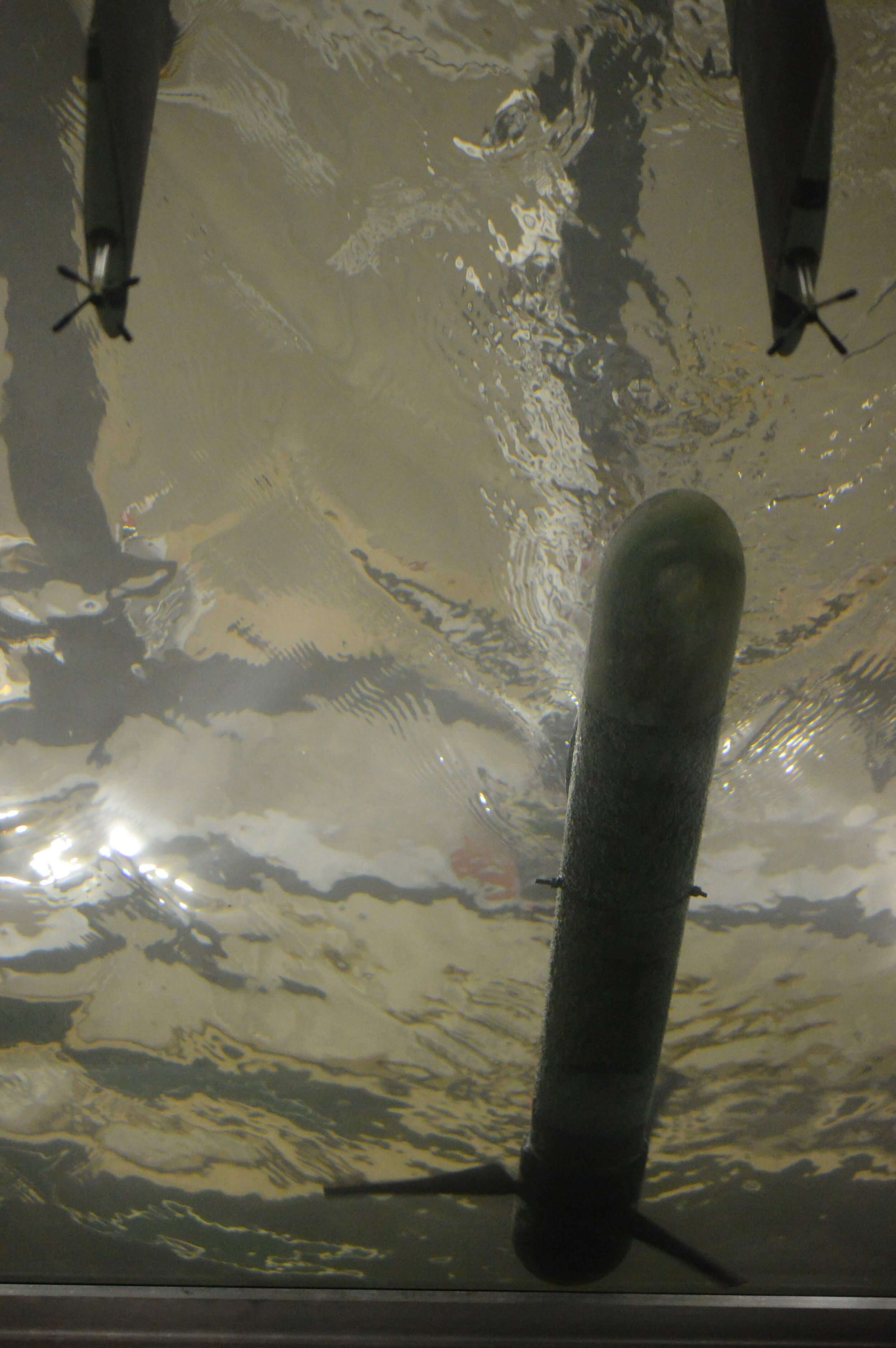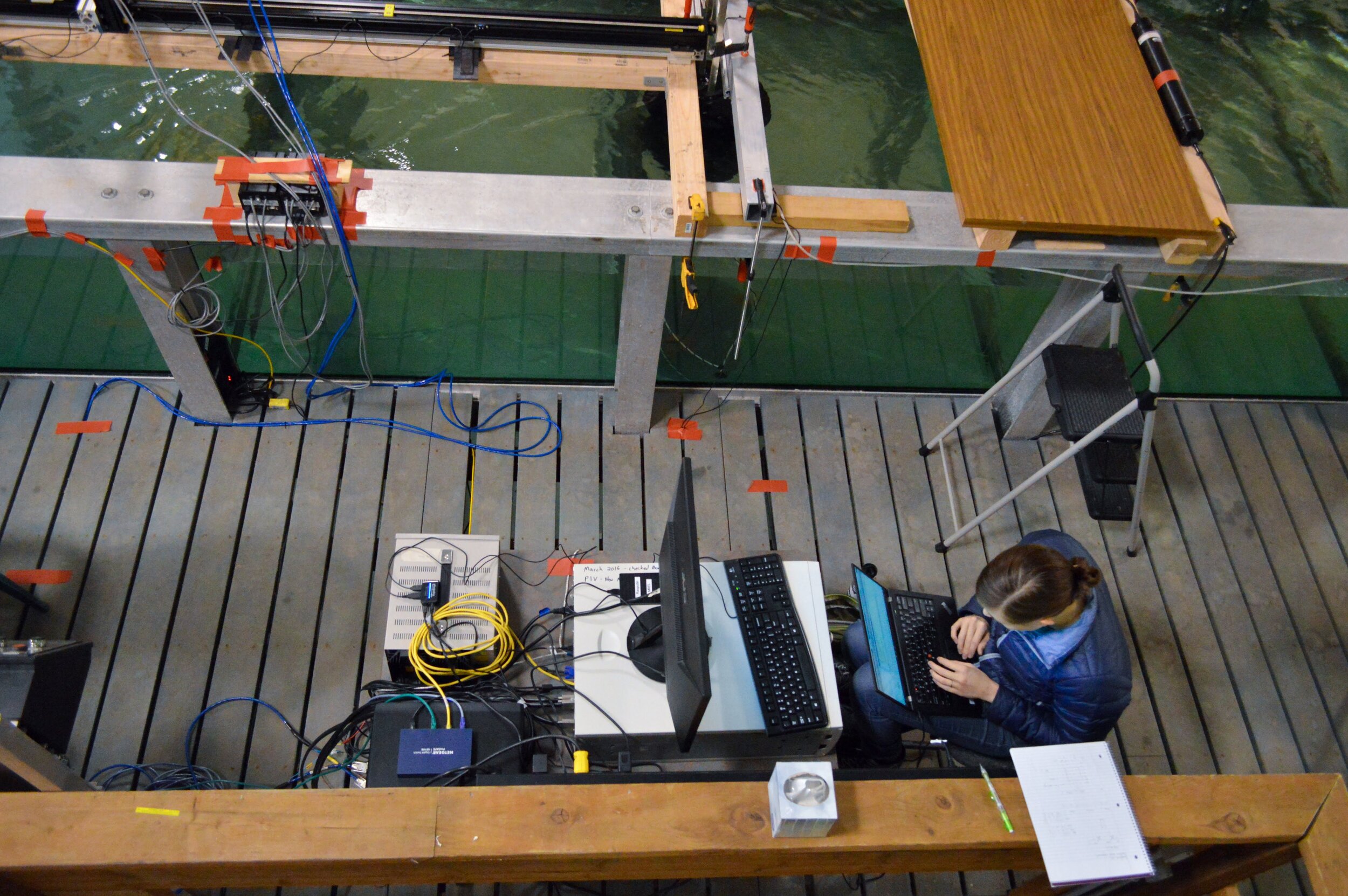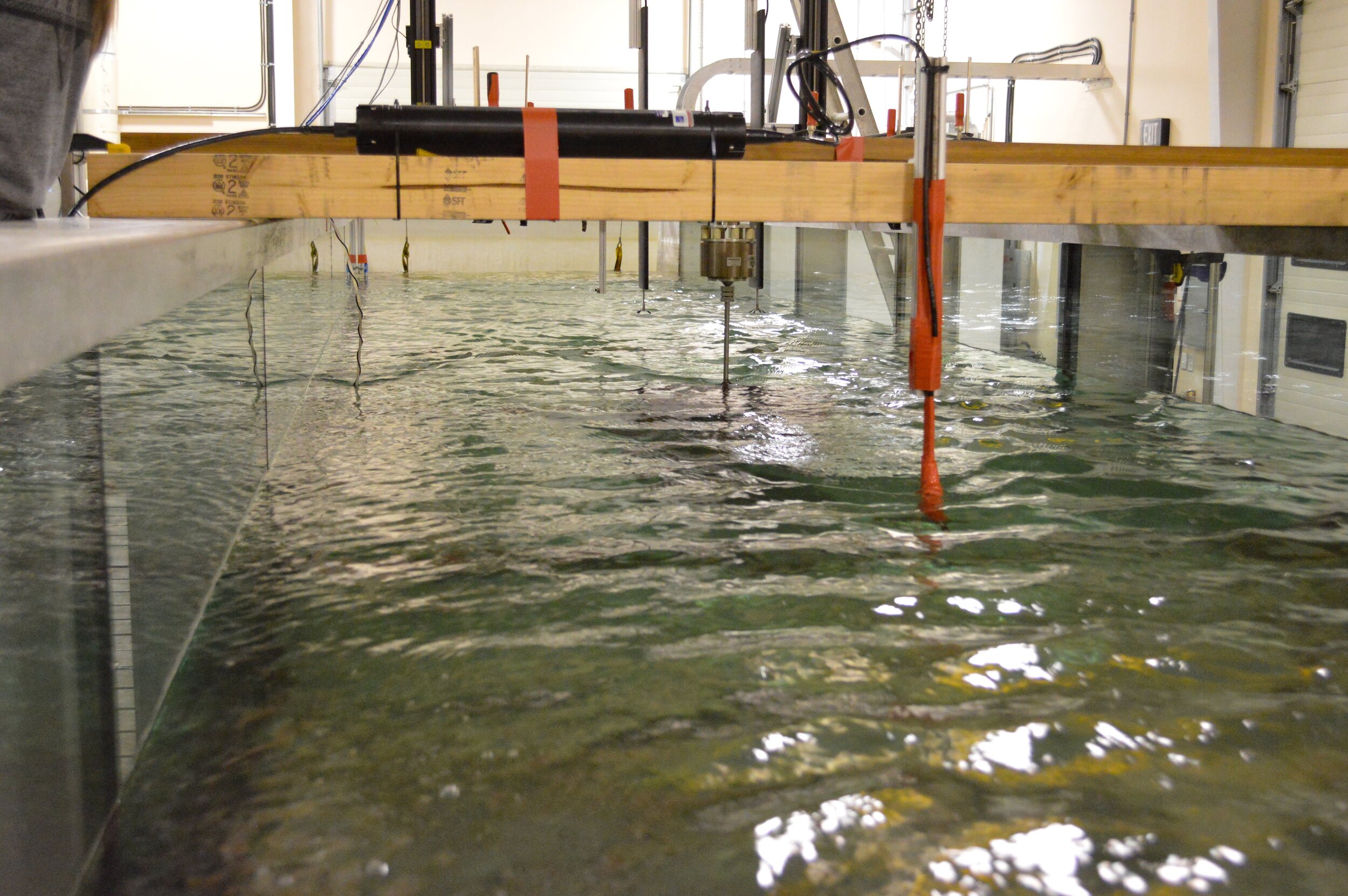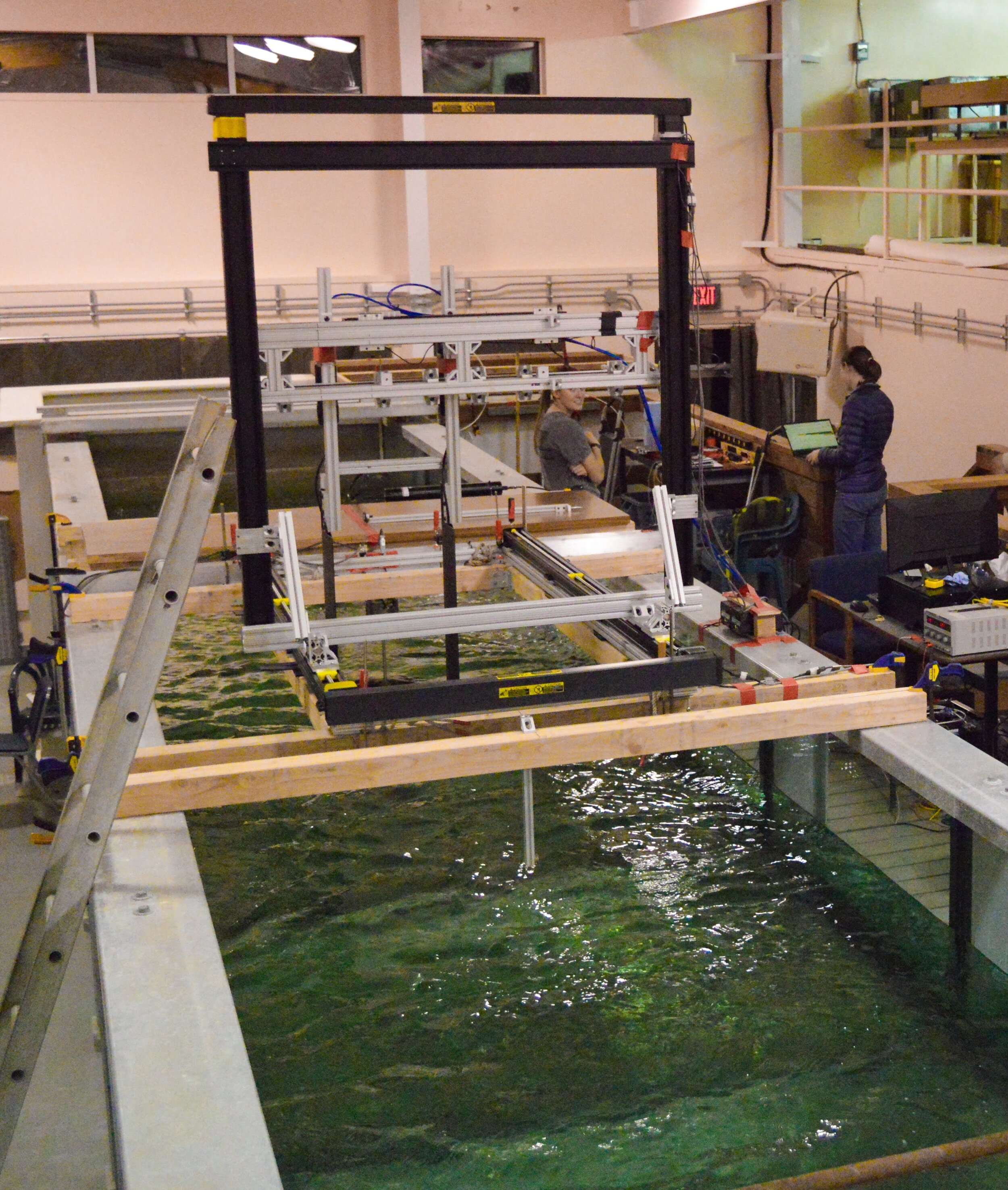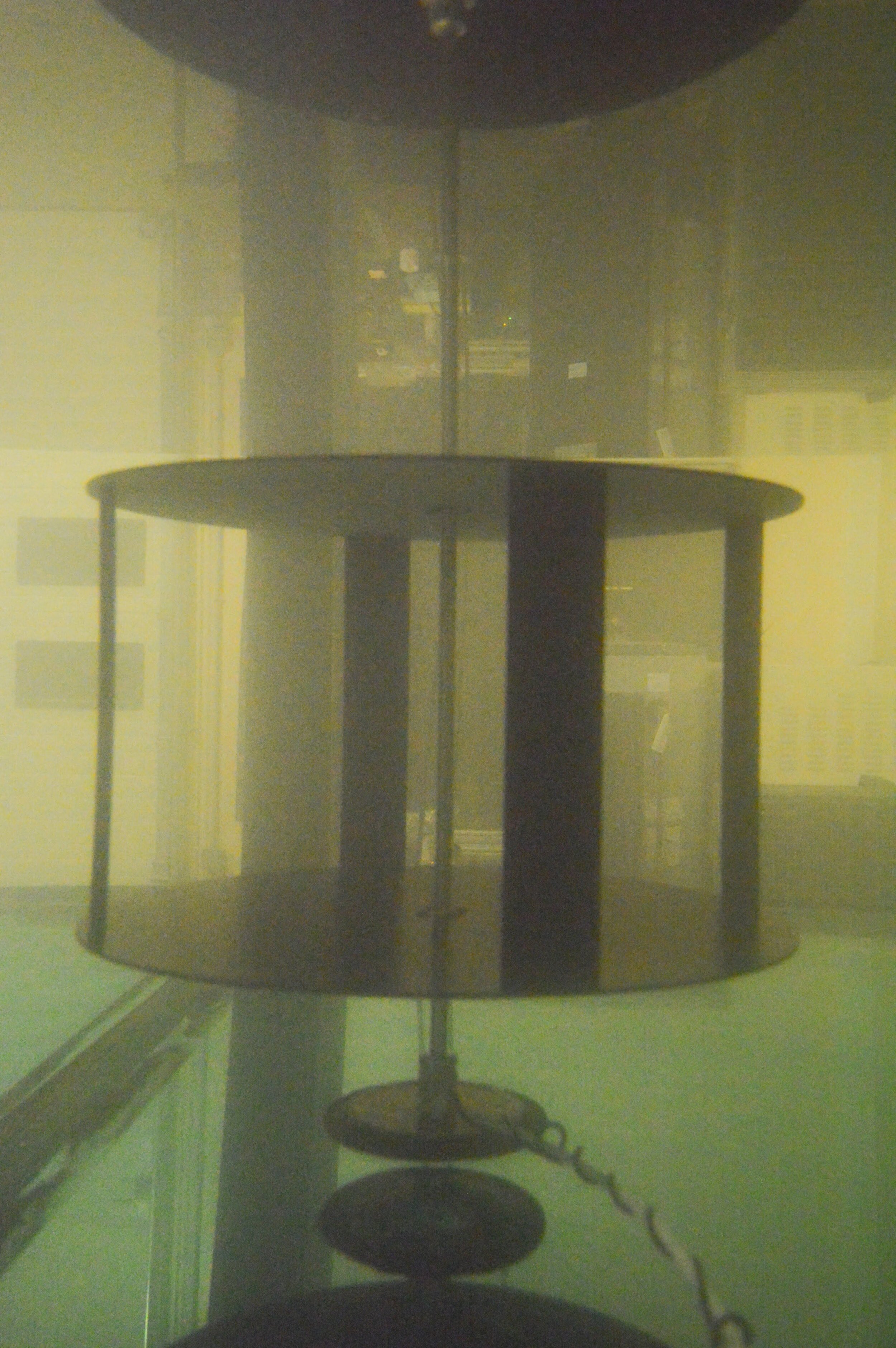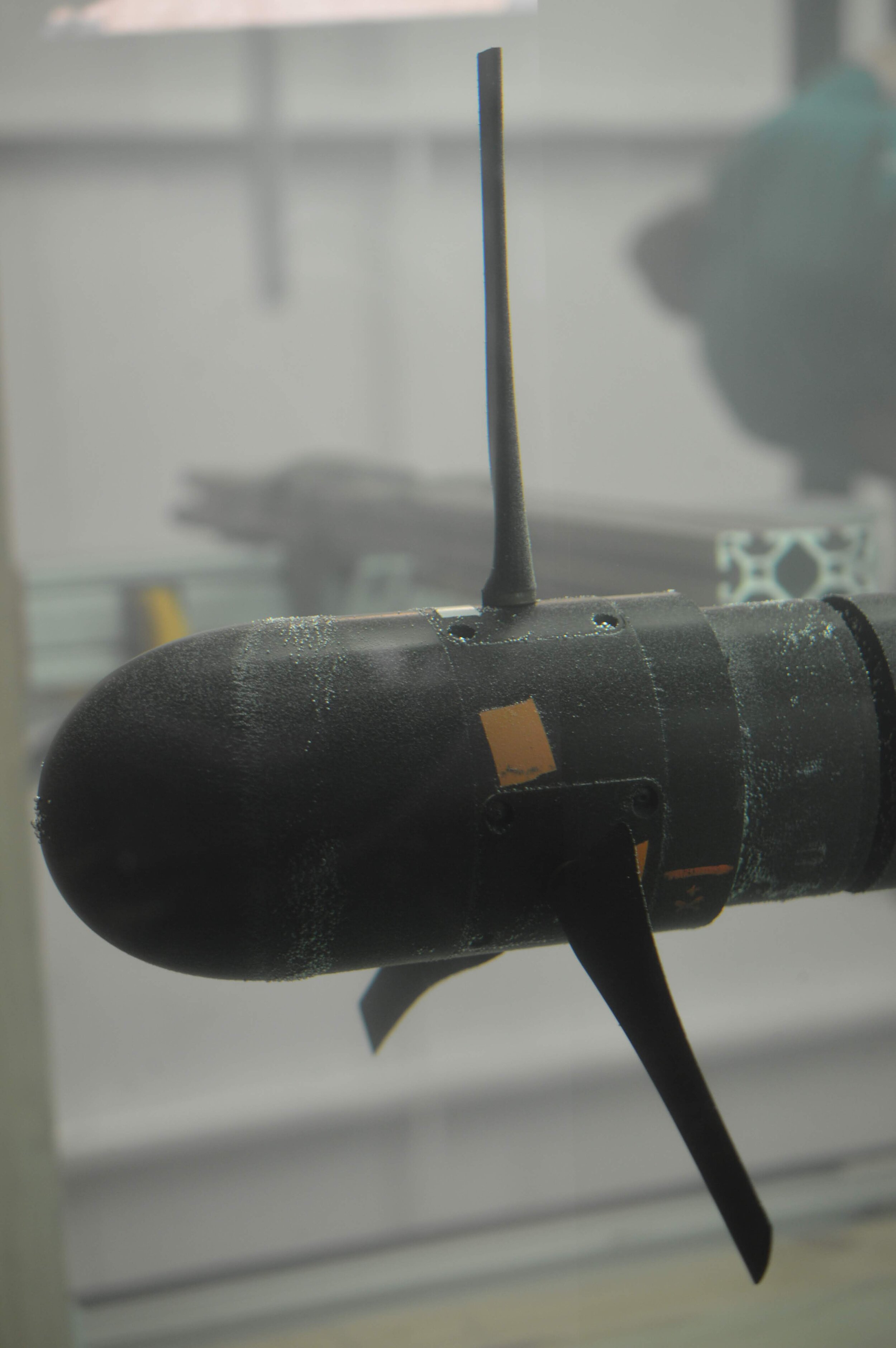Project Motivation:
The performance of a marine turbine designed to capture the energy of water currents, including tidal, in-river and ocean current devices, is largely dependent on the environment where the turbine is placed. While the relationship between the speed of currents and the associated energy output may seem straightforward, the detailed effects of flow confinement and blockage, in other words what happens when currents run through various sizes of bottlenecks and encounter various sizes of turbines, have not been well verified by experiments.
Strengthening these models is important to ensure testing done in laboratory flumes is reflective of full-scale conditions, and moreover to give insight on designing devices that optimize the use of confined flows and different turbine sizes to maximize performance.
Cross-flow (left) and axial-flow (right) turbines tested at low blockage in the Jere A. Chase Ocean Engineering Laboratory at the University of New Hampshire.
Summary:
Experiments characterizing the wake and performance of a cross-flow (vertical axis) turbine and an axial-flow (horizontal axis) turbine have been performed across multiple facilities that allow confinement to vary. Turbines have been tested under high blockage conditions in the Alice C. Tyler flume at the University of Washington, moderate blockage conditions in the Fluid Dynamics Lab flume at the Bamfield Marine Sciences Center in British Columbia, and negligible blockage conditions in the Jere A. Chase Ocean Engineering Lab tow tank at University of New Hampshire.
A team of PMEC graduate students from University of Washington ran experiments in the flume at the Bamfield Marine Sciences Center.
An analysis of the results has been used to test the effectiveness of several existing models for predicting the performance changes caused by blockage and to investigate how blockage and confinement affect turbine wake and water channel hydrodynamics.
Rendering of the lab-scale turbine (D=51 cm, H=31 cm) and measurement grid used in experiments characterizing confined flow wakes (left). Wake data were collected at varying blockage ratios at two different facilities (right). The water temperature, inflow speed, and channel depth were fixed between tests.
Current Results:
Confined and unconfined power and thrust coefficients for the (a,b) cross-flow and (c,d) axial-flow turbines. Increasing blockage results in overall higher power and thrust coefficients.
The experiments illustrated a number of interesting effects of blockage on flow hydrodynamics and turbine performance. As shown in past experiments, increasing confinement and blockage overall improves turbine performance, but new details underlying the mechanisms should improve future studies.
In looking at the accuracy of corrective models, the experiments indicated two models that yielded the best results, but also showed inherent limitations of the existing models. Overall, estimates for unconfined thrust were more accurate than estimates for unconfined power. The analysis suggests it would be valuable to produce a new blockage correction method that accounts for rotation and better describes highly loaded turbines.
Overall this research has contributed to a better understanding of potential power gains from confined flows and will inform the extrapolation of laboratory data to commercial scale. See the resources linked below for more detailed information on the studies.
Research Team:
More information:
Ross, H. and Polagye, B. “An experimental assessment of analytical blockage corrections for turbines”, Renewable Energy (1/31/2020)
Ross, H. and Polagye, B. “Blockage Effects on the Wake of a Cross-Flow Turbine”, Poster presented at PMEC All-Center Meeting. September 2019. Portland, OR.
Sponsor:
This material is based upon work supported by the National Science Foundation Graduate Research Fellowship Program under Grant No. DGE-1256082 and the US Department of Defense Naval Facilities Engineering Command.
Last updated: March 12, 2020

